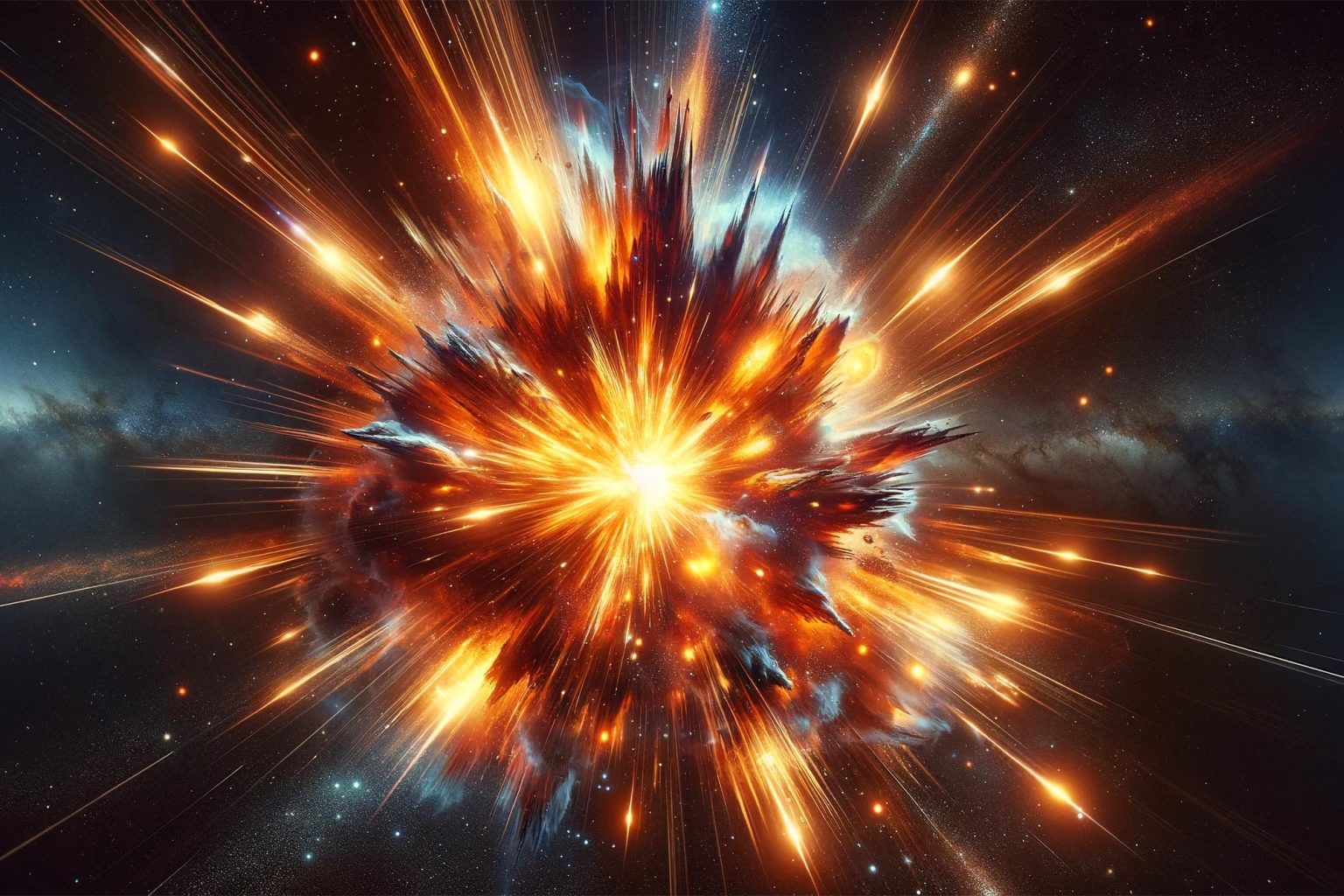Neutrinos, often referred to as “ghost particles,” are elementary particles in the Standard Model of Particle Physics. They interact very weakly with ordinary matter, making them elusive and difficult to detect. One of their fascinating properties is the ability to change their “flavors” when they interact with matter. This property is essential in understanding cosmic phenomena such as supernovae and neutron star mergers.
Neutrino Behavior in Supernovae and Neutron Star Mergers
Researchers have discovered that in extremely dense environments like supernovae or neutron star mergers, neutrinos can become entangled, sharing quantum states. This phenomenon, called quantum entanglement, significantly influences the behavior of neutrinos. Through these interactions, neutrinos of different flavors eventually reach an equilibrium, sharing similar flavor and energy distributions.
The Role of Neutrinos in Supernovae
A core-collapse supernova, such as the one observed in 1987 in the Large Magellanic Cloud, is the final explosion of a massive star. These cosmic events are crucial for the synthesis of elements like sodium and aluminum. Remarkably, scientists estimate that 99% of the energy released in a supernova is carried away by neutrinos. Understanding the energy and flavor states of these neutrinos is vital in comprehending how supernovae explode and the elements they create.
Advances in Neutrino Research
For decades, researchers have studied the flavor evolution of neutrinos in supernovae, which is a complex quantum mechanical process. Earlier research mostly used simplified models that ignored the many-body entanglement of neutrino quantum states. However, recent studies have included these quantum correlations, revealing new insights.
By utilizing random matrix theory, scientists discovered that neutrino interactions are chaotic, a result confirmed by numerical simulations. These simulations show that after interacting for extended periods, neutrinos reach a mixed momentum-flavor state, leading to an equilibrium distribution. This chaotic behavior may provide deeper insights into the mechanisms behind supernova explosions and the formation of elements in these cosmic events.
Supporting Research and Findings
The research led by Joshua D. Martin and his team was published in Physical Review D and supported by the Department of Energy’s Office of Science, Nuclear Physics program, and the Quantum Science Center. Their work confirmed that neutrinos evolve chaotically in dense environments and that these findings could be integrated into future numerical simulations of core-collapse supernovae, shedding light on the mechanics of these powerful cosmic phenomena.
Multiple-Choice Questions (MCQs):
1. What makes neutrinos challenging to detect?
a) They have no mass
b) They interact weakly with ordinary matter
c) They travel faster than light
d) They do not exist in dense environments
Answer: b) They interact weakly with ordinary matter
2. What happens to neutrinos in very dense environments like supernovae?
a) They stop interacting
b) They become entangled and share quantum states
c) They lose energy rapidly
d) They disappear completely
Answer: b) They become entangled and share quantum states
3. How much of the energy released in a core-collapse supernova is carried away by neutrinos?
a) 50%
b) 75%
c) 99%
d) 100%
Answer: c) 99%
4. What is the primary method scientists use to approximate neutrino interactions in dense environments?
a) String theory
b) Classical mechanics
c) Random matrix theory
d) Gravitational waves
Answer: c) Random matrix theory
5. Which phenomenon is essential for understanding the chaotic evolution of neutrinos in supernovae?
a) Gravitational lensing
b) Quantum entanglement
c) Black hole formation
d) Nuclear fusion
Answer: b) Quantum entanglement
